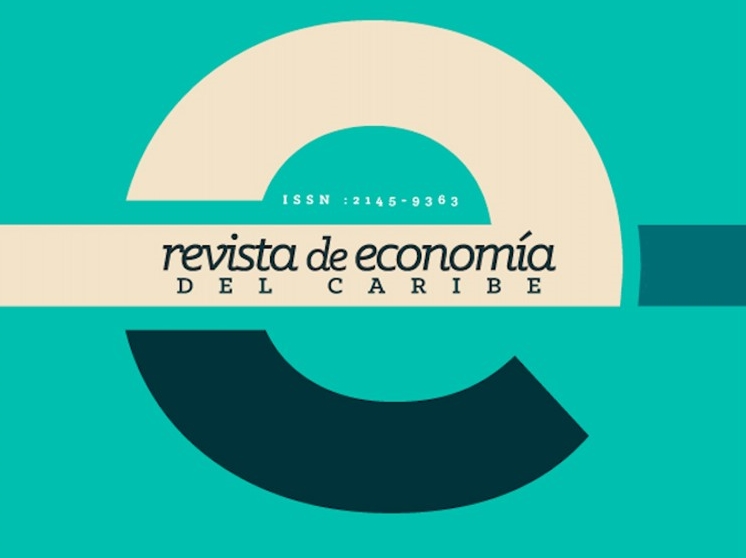Productive Structure and Intermunicipal Income Inequalities: a case study from Rio Grande do Norte, Brazil
Keywords:
Rio Grande do Norte, Income Inequality, Regional EconomyAbstract
The objective of the study is to analyze the dynamics of the productive structure in the mesoregions and the determinants of intermunicipal income inequalities in Rio Grande do Norte. Indicators of the regional economy and spatial econometrics tools were used to analyze the phenomenon. The results show that the productive structure of the East Potiguar mesoregion is the most advanced and developed and the one that employs the most in the State. It is noted the importance of the public sector in small town economies to mitigate inter-municipal income inequalities, in addition to the need for better water supply and adequate electricity supply, education incentives, improvements in conditions and health support for all.
References
Almeida, E. (2012). Econometria espacial. Campinas–SP. Alínea.
Alves, D. F. (2020). Estrutura Produtiva e Desigualdade Intermunicipal de Renda no Brasil: uma abordagem regional (Master's thesis, Universidade Federal do Rio Grande do Norte).
Alves, D. F., do O’de Lima Júnior, F., & Pereira, W. E. N. (2019). Disparidades Locacionais Na Estrutura Produtiva E Fragmentação Territorial: Uma Análise Das Mesorregiões Do Rio Grande Do Norte. Revista Estudo & Debate, 26(3).
Bandeira, S. C., Silva, B. C. N., & Silva, M. P. (2011). DESEQUILÍBRIOS REGIONAIS NO BRASIL E A HIPÓTESE DA CONVERGÊNCIA DO DESENVOLVIMENTO. RDE-Revista de Desenvolvimento Econômico, 12(22).
Castro, V. C., Kuhn, L., & Amanajás, H. W. (2017). Análise do quociente locacional e da dinâmica produtiva do município de Salinopólis. Observatorio de la Economía Latinoamericana (235).
Faggio, G., & Overman, H. (2014). The effect of public sector employment on local labour markets. Journal of urban economics, 79, 91-107.
Fishlow, A. (1973). Brazil's economic miracle. The World Today, 29(11), 474-481.
Goodchild, M. F. (2004). The validity and usefulness of laws in geographic information science and geography. Annals of the Association of American Geographers, 94(2), 300-303.
Haddad, P. R., Ferreira, C. D. C., Boisier, S., & ANDRADE, T. A. (1989). Economia regional: teorias e métodos de análise (pp. 207-223). Fortaleza: BNB/ETENE.
Lima, É. P. C., Silva, A. C., & Lima, E. C. (2017). Assimetrias locacionais e padrão industrial: Uma análise das Mesorregiões do Rio Grande do Norte. Revista Espacios, 38, 23-35.
Murphy, K. M., Shleifer, A., & Vishny, R. W. (1989). Industrialization and the big push. Journal of political economy, 97(5), 1003-1026.
Myrdal, G. (1968). Teoria econômica das regiões.
Neves, C., Neto, A. R., ESTEVES, E. G. Z., Parré, J. L., Amaral, A. E., & da CAMARA, M. R. G. (2015). Concentração de renda nos Municípios da Região Sul entre 2000 e 2010: Análise geográfica temporal utilizando a abordagem exploratória de dados espaciais. Revista ESPACIOS| Vol. 36 (Nº 23) Año 2015.
Perroux, F. (1955). Note sur la notion de póle de croissance. Tradução com permissão da Revista Brasileira de Estudos Políticos. Economie appliquée.
Pessôa, S. A. (1997). Existe um problema de desigualdade regional no Brasil?. Revista Econômica do Nordeste, 28(4).
Piacenti, C. A., & Lima, J. F. (Org.). (2017). Métodos de Análise Regional.
Rocha, C. B., & Parré, J. L. (2009). Estudo da distribuição espacial do setor agropecuário do Rio Grande do Sul. Análise Econômica, 27(52).
Silva, C. D. (2019). Migração intermunicipal no Brasil: evidências para as décadas de 2000 e 2010 (Master's thesis, Brasil).
Silva, J. L. M. D., & Montalván, D. B. V. (2008). Exportações do Rio Grande do Norte: estrutura, vantagens comparativas e comércio intra-indústrial. Revista de Economia e Sociologia Rural, 46, 547-568.
Simões, R. F. (2005). Métodos de análise regional e urbana: diagnóstico aplicado ao planejamento. Belo Horizonte: Cedeplar/UFMG.
Spinelli, J. A. (2014). Rio Grande do Norte 2000-2013. São Paulo: Fundação Perseu Abramo.
Trindade, S. L. B. (2010). História do Rio Grande do Norte. Instituto Federal de Educação, Ciência e Tecnologia do Rio Grande do Norte.
Published
Issue
Section
License
I, ____________________________________________, author of the work and/ or article, adult, residing in the city of _________________, bearing the Identity Card/Passport n.° ______________________, issued in _______________________, in command of his/her/their physical and mental faculties, party hereinafter referred to as AUTHOR, signs the following authorization so the reproduction, publication, communication and distribution of the work can be done, under the following terms:
1. That, regardless of existing legal regulations due to the relationship of the parties to this contract, and any other existing legal presumption, the parties agree that the AUTHOR authorizes the Universidad del Norte, with the purpose of reproduce, publish, communicate and distribute the material called in the Revista de Economía del Caribe.
2. That such authorization apply to the copyright of the work, by any means, known or to be known, the public communication of the work, and the distribution of the work, directly or by third parties, purely educational purposes.
3. The AUTHOR undertakes to inform and declare the existence of this authorization and to preserve the right of the journal Revista de Economía del Caribe to the first publication of the work.
4. The AUTHOR states that the article is original and his/her/their exclusive creation, there being no impediment of any kind for the authorization he/she/they is/are giving, responding thereto by any action: claim, plagiarism or any other type of complaint that might arise about.
5. That such authorization is granted for free.
6. The moral rights of the author on the article correspond exclusively to the AUTHOR, in virtue of which, the Universidad del Norte agrees to expressly and rigorously recognize and respect them.





























